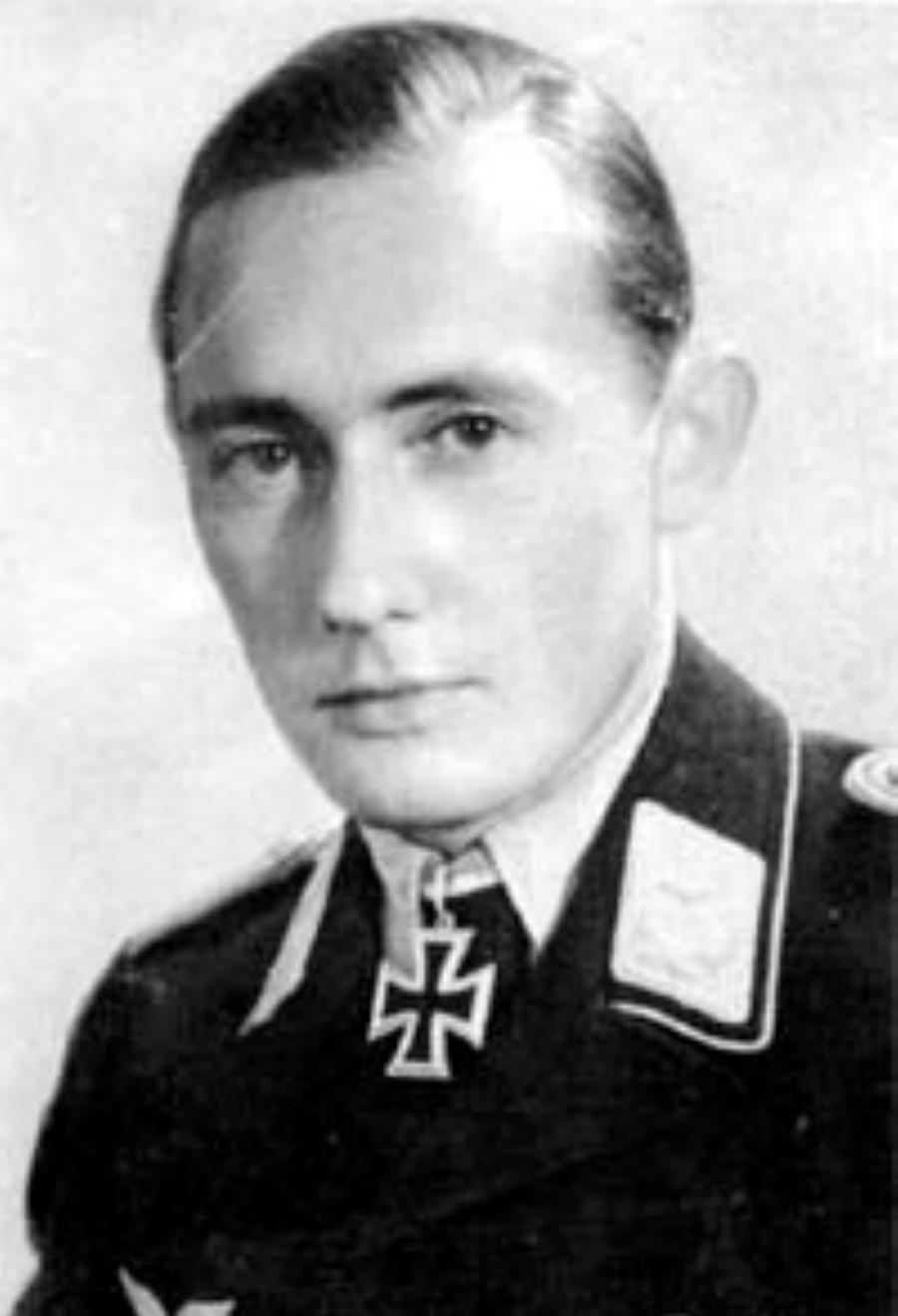An arrow through the clouds, the trump card will last forever.

Heinz. Saxeborg
Heinz. Heinz Sachsenberg was born on 12 July 1922 in Dessau in Sachsen-Anhalt. His surname may have come from a place name, indicating that the family had been living in Saxony for a long time. Speaking of the family, his uncle or uncle, Gerhard. Gotthard Sachsenberg was an ace pilot of world war I, with a recorded 31 shotdowns and a blue Marx medal.
Blue Marx Medal
In order to continue the flying genes in the family bloodline, Heinz and his brother joined the Luftwaffe. His brother, in particular, even inherited his uncle's name, also called Gerhard – the Germans took the name so as to save trouble? The result was retribution, and Gerhard Jr. died on the night of Women's Day on March 8, 1944. Fortunately, heinz, who, under the control of powerful family genes, performed better than the old Gerhard.
The Falk D.VII fighter jet that the elder Gerhard used to fly
In early 1941, Heinz joined the Luftwaffe for flight training, and in the autumn of 1942 he was assigned to Squadron 6/JG52 in the southern theater of the Eastern Front. On 21 April 1943, Heinz won his first air victory at Novorossiysk, where he fired one Il-2 attack aircraft. It can be seen that he started quite late, but eventually reached an amazing height. On June 5, Heinz shot down two more Yak-1 fighters, winning the 10th and 11th victories.
Yak-1 fighter
By the end of July 1943, Heinz had won 22 victories in the Battle of Cuban. He was then transferred with his troops to the Kursk salient to cover the German retreat. On August 4, Heinz won four times in a day, and on August 21 his record reached 38. From September to November, Heinz was given two months off, relieving the intense mental stress of the previous period. When he returned to the troops, it was just in time for the air battle in the Kerch Strait that was in full swing. Many times, the more capable people are, the more they will encounter big problems, which is an axiom that cannot be broken in life.
Kerch Strait
From November 1943 to March 22, 1944, the clockwork Heinz scored 38 more victories. The process is far from being as simple as it says. In January, he was hit in battle flying a Bf 109G-6, and not long after the forced landing escaped the cabin, the plane caught fire and burned. A pilot who has experienced hundreds of battles, not to mention how many planes he can shoot, anyway, if he can't master skydiving, forced landing, swimming and wilderness survival skills, then his chances of survival will be greatly reduced.
Bf 109 fighter
In early May 1944, Heinz, returning from a sabbatical, continued to play efficiently. On 7 May, he set a single-day record for a single-day high in which he shot down three Yak-7s, one Yak-1, one P-39 and one Il-2. By the end of May, he had shot down 92 aircraft. Heinz is like a motor that needs regular maintenance, as long as it is well maintained daily, when you need him to maintain high power for a long time or even overloaded, he always performs more than expected.
P-39 Flying Snake fighter
On 8 June 1944, Heinz was awarded the Knight's Cross for his outstanding results. After his 101 victories, the strong motor got a short break, but probably not enough time. When he returned to the troops, 6/JG52 was transferred to Romania to defend the Ployesti field, the last oil production base of the Axis powers. On June 23, 1944, Heinz was seriously wounded in a scuffle with U.S. P-51 Mustang fighters and landed in a Bf109G-6. Shortly thereafter, Heinz was promoted to the rank of second lieutenant.
P-51 fighter
In 1945, Heinz was transferred to squadron leader 9/JG7 and began training and modification of jets. In April, he was transferred to the JV44 to fly the Fw190D9 fighter jet, a squadron designed for airfield security. Because the Me262 is extremely vulnerable during takeoff or landing, and the adversary's strike radius already includes these airfields, additional aircraft can only be sent to remain vigilant over the airfield to cover the take-off and landing of those jet fighters.
Me262 jet
Heinz. Lieutenant Sachsenborg, who was fortunate enough to survive until the end of World War II. He achieved 104 air victories in 520 missions, 103 of which were on the Eastern Front. On June 17, 1951, Heinz died of complications from old wounds during the war, and the surging motor could no longer adapt to the slow pace of peaceful life, not so much from injury as he did not come out of the shadow of war. After the war, heinz was asked why he gave up flying jets, and the seemingly weak young man replied quite strongly: At least I don't believe in anything without a propeller!
Members of JV44, third from left is Heinz. Lieutenant Saxenberg